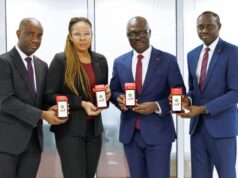By Audrey Lotechukwu
FRI, AUG 14 2020-theG&BJournal-The latest unemployment report published today by the National Bureau of Statistics (NBS) ‘’may not be reflective of the true scale of unemployment in the country,’’ analysts argue.
The report comes with six months data missing, reduced sample size which is below 20, 000 and a ‘novel’ survey method that deployed the use of Computer Assisted Telephone interviewing (CATI) approach, which sampled total of 18,500 households nationwide only.
According to NBS, a total number of 16,285 interviews were completed out of the initial sample of 18,500, giving a response rate of 88% at the end of the survey.
NBS said 332 households contacted declined participating in the interview, 786 households’ numbers did not connect, and 691 households had no contact numbers-leaving a lot more questions around the methodology of the survey.
Also, the figure around the number of persons in the labour force (people within ages 15 -64, who are able and willing to work), and the number of people available to work between the Q2 2020 and Q3, 2018 have an unclear twist.
The NBS says the number of persons in the labour force was estimated to be 80,291,893, and was 11.3% less than the number persons in Q3, 2018. This says that the number of people available to work is less than 11.3% of the country’s working population. For the NBS, it implies that as of Q2 2020, only 68.7% of Nigeria’s economically active population are in the labour force.
Survey Highlights
The survey shows that the number of persons in the economically active or working age population (15 – 64 years of age) during the reference period of the survey, Q2, 2020 was 116,871,186. This is 1.2% higher than the figure recorded in Q3, 2018, which was 115,492,969.
The total number of people in employment (i.e. people with jobs) during the reference period was 58,527,276. Of this number, 35,585,274 were full-time employed (i.e. worked 40+ hours per week), while 22,942,003 were under-employed (i.e. working between 20-29 hours per week). This figure is 15.8% less than the people in employment in Q3, 2020.
The unemployment rate during the reference period, Q2, 2020 was 27.1%, up from the 23.1% recorded in Q3, 2018. The underemployment rate increased from 20.1% in Q3, 2018 to 28.6%.
The unemployment rate among rural dwellers was 28%, up from 23.9% in Q3, 2018, while urban dwellers reported a rate of 25.4%, up from 21.2%. In the case of underemployment among rural dwellers, it rose to 31.5% from 22.8%, while the rate among urban dwellers rose to 23.2% from 13.7% in Q3, 2018.
For the period under review, Q2, 2020, the unemployment rate among young people (15-34years) was 34.9%, up from 29.7%, while the rate of underemployment for the same age group rose to 28.2% from 25.7% in Q3, 2018. These rates were the highest when compared to other age groupings.
Imo State reported the highest rate of unemployment with 48.7% followed by Akwa-Ibom State and Rivers State with 45.2% and 43.7% respectively. The lowest rate was Anambra in the South-East with 13.1%.
For underemployment, the state which recorded the highest rate was Zamfara with 43.7%, while Anambra State recorded the lowest underemployment rate, with 17% in Q2, 2020 A total number of 2,736,076 did not do any work in the last 7 days preceding the survey due to the lockdown but had secure jobs to return to after the lockdown.
|twitter:@theGBJournal|email: info@govandbusinessjournal.com.ng|









